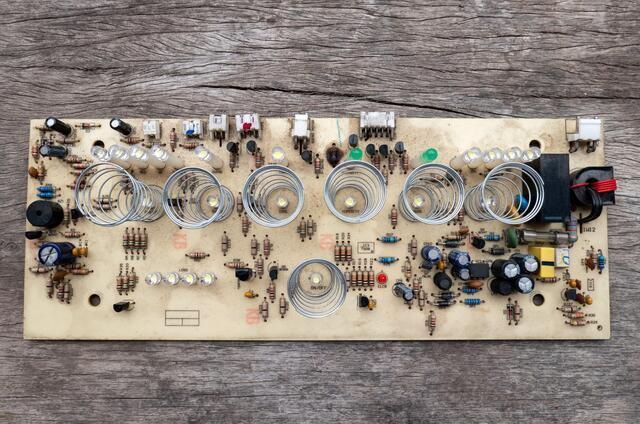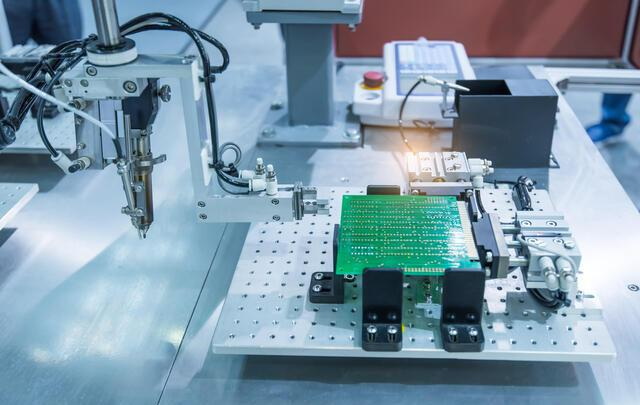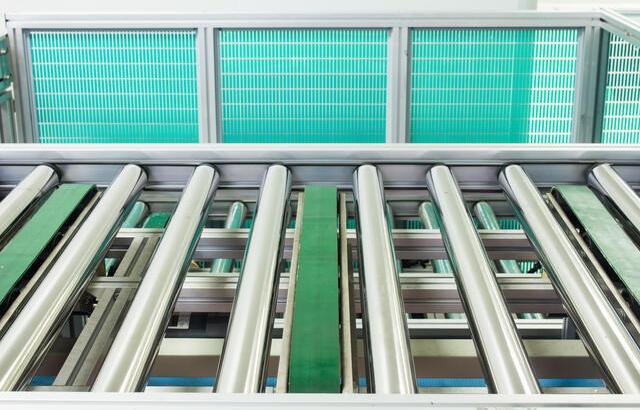Content Menu
● Introduction to SMT Stencils
● Types of Coatings for SMT Stencils
● Benefits of Coated SMT Stencils
● Challenges and Considerations
● Future Trends in SMT Stencil Technology
● Case Studies and Practical Applications
● Emerging Technologies in SMT Stencil Coatings
● Market Trends and Growth
● Conclusion
● FAQ
>> 1. What are the primary benefits of using ceramic nano-coatings on SMT stencils?
>> 2. How do vapor-deposited coatings compare to other types of coatings in terms of durability?
>> 3. What is the difference between SAM and ceramic nano-coatings in terms of application and benefits?
>> 4. How does the NanoSlic coating enhance the performance of SMT stencils?
>> 5. What factors should be considered when selecting a coating for an SMT stencil?
Surface Mount Technology (SMT) stencils are crucial tools in the electronics manufacturing industry, enabling precise and consistent application of solder paste onto printed circuit boards (PCBs). The performance of these stencils can be significantly enhanced by applying various coatings, which improve solder paste transfer efficiency, reduce bridging, and minimize underside cleaning. In this article, we will explore how different coatings affect the performance of SMT stencils, focusing on coated SMT stencils.

Introduction to SMT Stencils
SMT stencils are typically made from materials like stainless steel or nickel alloys, with laser-cut apertures that correspond to the solder pad locations on a PCB. These stencils play a vital role in ensuring reliable solder joints between components and the PCB. The choice of stencil material and coating can significantly impact the quality and efficiency of the solder paste application process.
Types of Coatings for SMT Stencils
Several types of coatings are used on SMT stencils, each offering distinct benefits:
1. Ceramic Nano-Coatings: These coatings are applied using precision spray equipment and are known for improving transfer efficiency, especially for small area ratio printing. They reduce underside cleaning frequency and bridging after print by creating a hydrophobic surface that repels solder paste flux. Ceramic coatings have been shown to increase transfer efficiency by up to 25% compared to uncoated stencils.
2. Self-Assembled Monolayer (SAM) Coatings: SAM coatings are manually applied and are typically 2-4 nanometers thick. They reduce underside cleaning and bridging but may decrease transfer efficiency for small area ratios. SAM coatings do not improve paste release from stencil apertures but are beneficial for reducing bridging and improving print process consistency.
3. Vapor Deposited Coatings (CVD/PVD): These coatings are deposited using chemical vapor deposition or physical vapor deposition techniques. They offer high durability and improved transfer efficiency, making them suitable for high-volume production. StenTech's BluPrint CVD treatment, for example, enhances stencil performance by providing a smooth, high-gloss surface with enhanced corrosion resistance.
4. NanoSlic Coatings: These are advanced polymer coatings that provide a hydrophobic and oleophobic surface, significantly improving solder paste release and reducing bridging. They are thermally cured and offer a durable, permanent coating. NanoSlic coatings are compatible with current assembly equipment and processes, making them a practical choice for enhancing stencil performance.
Benefits of Coated SMT Stencils
Coated SMT stencils offer several advantages over uncoated ones:
- Improved Transfer Efficiency: Coatings like ceramic nano-coatings and vapor-deposited coatings enhance the release of solder paste from the stencil, leading to higher yields and less rework. This is particularly important for fine-pitch components and small area ratio printing.
- Reduced Bridging: By creating a surface that repels solder paste, coatings minimize bridging between components, improving print quality. Both SAM and ceramic coatings have been shown to reduce bridging, though SAM coatings do not enhance paste release.
- Minimized Underside Cleaning: Coatings reduce the frequency of underside cleaning, which can extend the stencil's lifespan and reduce maintenance costs. This is achieved by reducing solder paste adhesion to the stencil surface.
- Enhanced Durability: Some coatings, such as vapor-deposited coatings, provide a durable surface that resists wear and tear, extending the stencil's working life. Thicker coatings like ceramic nano-coatings also offer greater wear resistance compared to thinner coatings like SAM.
Challenges and Considerations
While coatings offer numerous benefits, there are challenges to consider:
- Cost: Applying coatings can increase the initial cost of the stencil, though long-term benefits may offset this expense. The cost-effectiveness depends on the specific coating and production volume.
- Compatibility: Different coatings may require specific application processes or equipment, which can add complexity to production. Ensuring compatibility with existing assembly lines is crucial.
- Wear and Tear: Some coatings, like SAM coatings, may wear off over time and require reapplication. This can be a maintenance challenge, though reapplication is possible for certain coatings.

Future Trends in SMT Stencil Technology
The evolution of SMT stencil technology continues to drive innovation:
- Nano-coatings and Surface Treatments: Advanced nano-coatings improve solder paste release and reduce adhesion, enhancing print quality and fine-pitch component printing. They also require less frequent cleaning, prolonging stencil life. Nano-coatings represent a significant advancement in stencil technology, offering enhanced performance and reduced maintenance requirements.
- Additive Manufacturing and Customization: 3D printing enables custom-designed SMT stencils with intricate geometries and tailored aperture designs. This flexibility accommodates unique PCB layouts and component configurations. Additive manufacturing allows for the creation of highly specialized stencils that can meet the specific needs of complex and innovative PCB designs.
- Integrated Inspection and Quality Assurance: Emerging technologies integrate automated inspection systems into the stencil printing process, enabling real-time monitoring of solder paste deposition quality. Automated systems detect defects like insufficient solder paste volume or misalignment, ensuring adherence to manufacturing specifications. Integrated inspection technologies are crucial for maintaining high standards of quality and reliability in modern PCB assembly processes.
Case Studies and Practical Applications
In practical applications, coated SMT stencils have shown significant improvements in production efficiency and quality. For instance, a manufacturer of high-density PCBs reported a reduction in bridging by 30% and an increase in transfer efficiency by 20% after implementing ceramic nano-coatings on their stencils. This improvement led to higher yields and reduced rework, resulting in cost savings and enhanced product reliability.
Another case involved a company transitioning from SAM coatings to NanoSlic coatings. They observed a notable decrease in underside cleaning frequency and an improvement in solder paste release, which contributed to smoother production processes and better print quality.
Emerging Technologies in SMT Stencil Coatings
The field of SMT stencil coatings is rapidly evolving, with new technologies offering enhanced performance and efficiency. For instance, advancements in nano-coating materials have led to coatings with improved hydrophobicity and oleophobicity, further reducing solder paste adhesion and bridging. These advancements are crucial for meeting the demands of miniaturization and high-density PCB assembly.
Market Trends and Growth
The global SMT stencil market is experiencing robust growth, driven by the increasing demand for sophisticated electronic devices across diverse sectors. The surge in miniaturization and automation within the electronics manufacturing industry is a key factor fueling this expansion. Frameless SMT stencils are gaining popularity due to their superior precision and adaptability to complex PCB designs, while framed stencils continue to hold a significant market share due to their cost-effectiveness and ease of handling.
The market is segmented geographically, with North America and Asia-Pacific currently dominating, reflecting the high concentration of electronics manufacturing hubs in these regions. However, other regions like Europe and the Middle East & Africa are witnessing steady growth, driven by expanding electronics industries and rising disposable incomes.
Conclusion
In conclusion, different coatings can significantly enhance the performance of SMT stencils by improving solder paste transfer efficiency, reducing bridging, and minimizing underside cleaning. The choice of coating depends on specific production needs, including the type of components being assembled and the desired level of durability. Coated SMT stencils are becoming increasingly important in the electronics manufacturing industry as they help achieve higher yields and better print quality.

FAQ
1. What are the primary benefits of using ceramic nano-coatings on SMT stencils?
Ceramic nano-coatings improve transfer efficiency, reduce underside cleaning frequency, and minimize bridging after print. They are particularly effective for small area ratio printing, enhancing solder paste release and reducing defects.
2. How do vapor-deposited coatings compare to other types of coatings in terms of durability?
Vapor-deposited coatings, such as CVD and PVD coatings, are known for their high durability and resistance to wear. They offer improved transfer efficiency and are suitable for high-volume production, providing a smooth surface that enhances stencil performance.
3. What is the difference between SAM and ceramic nano-coatings in terms of application and benefits?
SAM coatings are manually applied and are typically thinner, offering reduced underside cleaning but potentially decreasing transfer efficiency for small area ratios. Ceramic nano-coatings are thicker and improve transfer efficiency, especially for small components.
4. How does the NanoSlic coating enhance the performance of SMT stencils?
NanoSlic coatings provide a hydrophobic and oleophobic surface, significantly improving solder paste release and reducing bridging. They are durable and thermally cured, offering a permanent coating solution that minimizes underside cleaning and enhances print quality.
5. What factors should be considered when selecting a coating for an SMT stencil?
When selecting a coating, consider the type of components being assembled, the desired level of durability, compatibility with existing equipment, and the cost-benefit analysis of improved performance versus increased initial cost.




















